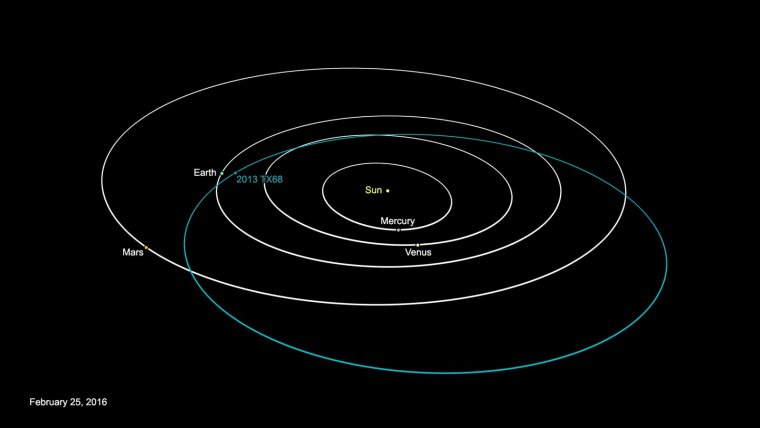| News / Science News |
Small Asteroid to Pass Close to Earth March 8
NASA | MARCH 4, 2016
A small asteroid that two years ago flew past Earth at a comfortable distance of about 1.3 million miles (2 million kilometers) will safely fly by our planet.

This graphic depicts the orbit of asteroid 2013 TX68. The asteroid will fly by Earth on March 8. ![]()
During the upcoming March 5 flyby, asteroid 2013 TX68 could fly past Earth as far out as 9 million miles (14 million kilometers) or as close as 11,000 miles (17,000 kilometers).
Additional observations of asteroid 2013 TX68 have been obtained, refining its orbital path and moving the date of the asteroid's Earth flyby from March 5 to March 8.
The data indicate that this small asteroid will probably pass much farther away from Earth than previously thought and that 2013 TX68 cannot impact Earth over the next century.
The new prediction for 2013 TX68 is that it will fly by roughly 3 million miles (5 million kilometers) from our planet. There is still a chance that it could pass closer, but certainly no closer than 15,000 miles (24,000 kilometers) above Earth's surface.
YOU MAY ALSO LIKE



